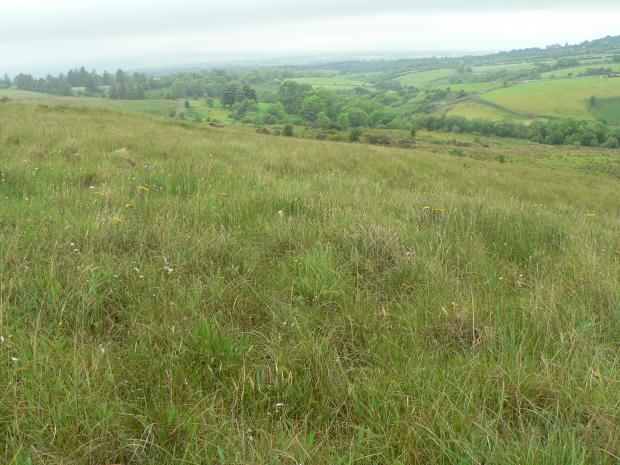
This area is of special scientific interest because of its species-rich wet grassland. Species-rich grassland tends to occur only where land management is not intensive, in particular where traditional farming practices have been maintained. As a result, it is not a widespread habitat in Northern Ireland and is often fragmented, consisting of individual fields, parts of fields or banks. Species-rich grasslands, like those found at Smulgedon, are a particularly scarce resource in Northern Ireland.
Smulgedon is situated on the lower, north-facing slopes of Smulgedon Hill, which is located on the foothills of the Sperrin Mountains to the Northeast of Dungiven. Smulgedon is on the edge of the uplands with an altitude of approximately 180 –190m above sea level. The area slopes quite steeply in places down towards the Castle River valley. The soils on the majority of the area are humic rankerse, (a thin primitive soil derived from the underlying parent material of basic igneous rock).
Due to a combination of factors such as slope, altitude and the westerly geographical position, these soils are kept moist. This combination of topography and the related soil hydrology has resulted in a complex range of species-rich wet grasslands within a small area. These vary from species-rich rush pasture to fen meadow, with base-loving plants present throughout the area. Fen meadow vegetation occurs in Smulgedon as there is a steady hydrological influence flowing through the soil which results in the occurrence of species adapted to both water movement and wetter conditions such as meadow thistle and purple moor grass. Typical species associated with fen meadow vegetation at Smulgedon include tormentil, Devil’s-bit scabious, carnation sedge, sharp flowered rush, heather, lesser spearwort, tawny sedge, selfheal and marsh ragwort.
Species-rich rush pasture occurs towards the lower end of the slopes where there is increased waterlogging and has sharp flowered rush and marsh bedstraw frequent within the sward. Species-rich rush pasture is characterised by plants also tolerant of wetter conditions such as sneezewort, carnation sedge, marsh horsetail, and heath woodrush.
Related articles
- ASSI Guidance for Public Bodies/Competent Authorities
- Coastal Areas of Special Scientific Interest
- Conservation Management Plans (CMPs)
- European Marine Sites - Marine Special Areas of Conservation and Special Protection Areas
- Introduction to Conservation Management Plans (CMPs) for Northern Ireland’s Special Areas of Conservation
- Marine Conservation Zones
- Marine Protected Areas
- Marine Ramsar sites
- Portrush Coastal Zone
- Special Areas of Conservation
- Special Areas of Conservation for Harbour porpoise
- Special Protection Areas
